 Java
Java javaTutorial
javaTutorial In-depth understanding of key concepts and frameworks in the Java technology stack
In-depth understanding of key concepts and frameworks in the Java technology stack
In-depth understanding of the key concepts and frameworks in the Java technology stack
With the continuous development of computer technology, Java, as a widely used programming language, is playing an important role in software development. plays an important role in the field. The key concepts and frameworks in the Java technology stack provide developers with powerful functionality and flexibility. In this article, we will delve into several key concepts and frameworks in the Java technology stack and explain their application through code examples.
1. Java Virtual Machine (JVM)
Java Virtual Machine (Java Virtual Machine) is one of the most important components of the Java technology stack. It is a platform for Java programs to run on different operating systems. The JVM is responsible for loading Java bytecodes and interpreting and executing them. Through the existence of JVM, developers can write code once and then run it on multiple operating systems without worrying about platform differences.
The following is a simple Java program example:
public class HelloWorld {
public static void main(String[] args) {
System.out.println("Hello, World!");
}
}The above code is run by using the JVM. We compile and run it through the command line:
$ javac HelloWorld.java $ java HelloWorld
2. Spring Framework
The Spring framework is one of the most popular frameworks in the Java technology stack. It provides a lightweight container for managing the life cycle and dependencies of Java objects. The Spring framework also provides many other features, such as AOP (aspect-oriented programming) and IoC (inversion of control).
The following is a simple Spring framework example that shows how to use Spring for object dependency injection:
import org.springframework.context.ApplicationContext;
import org.springframework.context.support.ClassPathXmlApplicationContext;
public class Main {
public static void main(String[] args) {
ApplicationContext context = new ClassPathXmlApplicationContext("applicationContext.xml");
HelloWorld helloWorld = (HelloWorld) context.getBean("helloWorld");
helloWorld.printMessage();
}
}
public class HelloWorld {
private String message;
public void setMessage(String message) {
this.message = message;
}
public void printMessage() {
System.out.println(message);
}
}In the above code, we load a configuration file applicationContext through the Spring framework's ApplicationContext container. .xml, and obtained an object named helloWorld from it. Then, we call the object's printMessage() method to print out a message.
3. Hibernate Framework
The Hibernate framework is an open source object-relational mapping (ORM) framework for data interaction between Java and databases. Using Hibernate, developers can operate the database in an object-oriented manner without writing cumbersome SQL statements.
The following is a simple Hibernate framework example that shows how to use Hibernate for database operations:
import org.hibernate.Session;
import org.hibernate.SessionFactory;
import org.hibernate.cfg.Configuration;
public class Main {
public static void main(String[] args) {
Configuration configuration = new Configuration().configure();
SessionFactory sessionFactory = configuration.buildSessionFactory();
Session session = sessionFactory.openSession();
// 查询所有用户
List<User> users = session.createQuery("FROM User").list();
for (User user : users) {
System.out.println(user.getName());
}
session.close();
}
}
@Entity
@Table(name = "user")
public class User {
@Id
@GeneratedValue(strategy = GenerationType.IDENTITY)
private Long id;
@Column(name = "name")
private String name;
// 省略getter和setter方法
}In the above code, we use the Hibernate configuration file to create the SessionFactory object. Then, we open a new session (Session) through SessionFactory and use the session to execute a query statement to obtain the data of all users.
4. Spring Boot Framework
Spring Boot framework is a framework that simplifies Spring application development. It provides automatic configuration and quick startup functions, allowing developers to build and deploy Spring applications faster.
The following is a simple Spring Boot framework example, showing how to use Spring Boot to build a simple web application:
import org.springframework.boot.SpringApplication;
import org.springframework.boot.autoconfigure.SpringBootApplication;
import org.springframework.web.bind.annotation.GetMapping;
import org.springframework.web.bind.annotation.RestController;
@SpringBootApplication
public class Application {
public static void main(String[] args) {
SpringApplication.run(Application.class, args);
}
}
@RestController
public class HelloWorldController {
@GetMapping("/")
public String helloWorld() {
return "Hello, World!";
}
}In the above code, we use Spring Boot’s @SpringBootApplication annotation to mark main class and starts the application in its main method. Then, we marked a Controller class with the @RestController annotation and defined a simple handler method in it to handle the root request ("/") and return a hello message.
Summary:
In this article, we have an in-depth understanding of the key concepts and frameworks in the Java technology stack, including the Java Virtual Machine (JVM), Spring framework, Hibernate framework and Spring Boot framework. Through code examples, we demonstrate their application and hope that readers can have a deeper understanding of these important concepts and frameworks in the Java technology stack and be able to flexibly apply them in actual projects.
The above is the detailed content of In-depth understanding of key concepts and frameworks in the Java technology stack. For more information, please follow other related articles on the PHP Chinese website!
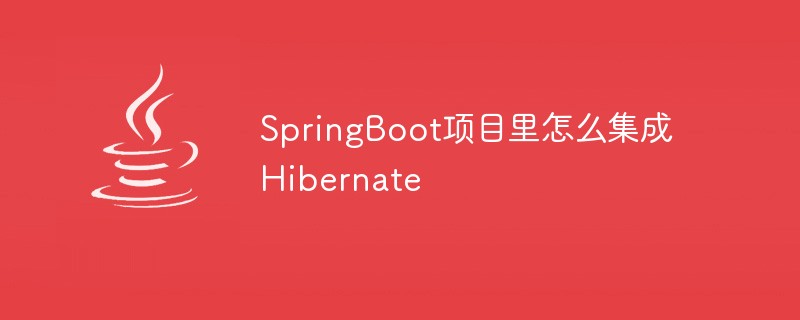 SpringBoot项目里怎么集成HibernateMay 18, 2023 am 09:49 AM
SpringBoot项目里怎么集成HibernateMay 18, 2023 am 09:49 AM在SpringBoot项目中集成Hibernate前言Hibernate是一个流行的ORM(对象关系映射)框架,它可以将Java对象映射到数据库表,从而方便地进行持久化操作。在SpringBoot项目中,集成Hibernate可以帮助我们更轻松地进行数据库操作,本文将介绍如何在SpringBoot项目中集成Hibernate,并提供相应的示例。1.引入依赖在pom.xml文件中引入以下依赖:org.springframework.bootspring-boot-starter-data-jpam
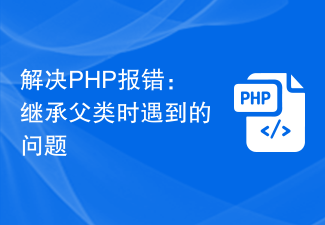 解决PHP报错:继承父类时遇到的问题Aug 17, 2023 pm 01:33 PM
解决PHP报错:继承父类时遇到的问题Aug 17, 2023 pm 01:33 PM解决PHP报错:继承父类时遇到的问题在PHP中,继承是一种重要的面向对象编程的特性。通过继承,我们能够重用已有的代码,并且能够在不修改原有代码的情况下,对其进行扩展和改进。尽管继承在开发中应用广泛,但有时候在继承父类时可能会遇到一些报错问题,本文将围绕解决继承父类时遇到的常见问题进行讨论,并提供相应的代码示例。问题一:未找到父类在继承父类的过程中,如果系统无
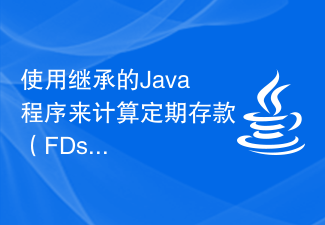 使用继承的Java程序来计算定期存款(FDs)和定期存款(RDs)的利息Aug 20, 2023 pm 10:49 PM
使用继承的Java程序来计算定期存款(FDs)和定期存款(RDs)的利息Aug 20, 2023 pm 10:49 PM继承是一个概念,它允许我们从一个类访问另一个类的属性和行为。被继承方法和成员变量的类被称为超类或父类,而继承这些方法和成员变量的类被称为子类或子类。在Java中,我们使用“extends”关键字来继承一个类。在本文中,我们将讨论使用继承来计算定期存款和定期存款的利息的Java程序。首先,在您的本地机器IDE中创建这四个Java文件-Acnt.java−这个文件将包含一个抽象类‘Acnt’,用于存储账户详情,如利率和金额。它还将具有一个带有参数‘amnt’的抽象方法‘calcIntrst’,用于计
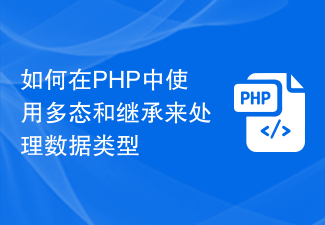 如何在PHP中使用多态和继承来处理数据类型Jul 15, 2023 pm 07:41 PM
如何在PHP中使用多态和继承来处理数据类型Jul 15, 2023 pm 07:41 PM如何在PHP中使用多态和继承来处理数据类型引言:在PHP中,多态和继承是两个重要的面向对象编程(OOP)概念。通过使用多态和继承,我们可以更加灵活地处理不同的数据类型。本文将介绍如何在PHP中使用多态和继承来处理数据类型,并通过代码示例展示它们的实际应用。一、继承的基本概念继承是面向对象编程中的一种重要概念,它允许我们创建一个类,该类可以继承父类的属性和方法
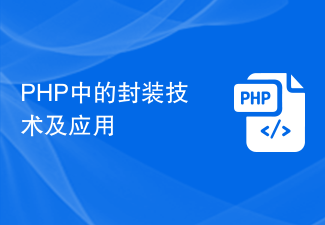 PHP中的封装技术及应用Oct 12, 2023 pm 01:43 PM
PHP中的封装技术及应用Oct 12, 2023 pm 01:43 PMPHP中的封装技术及应用封装是面向对象编程中的一个重要概念,它指的是将数据和对数据的操作封装在一起,以便提供对外部程序的统一访问接口。在PHP中,封装可以通过访问控制修饰符和类的定义来实现。本文将介绍PHP中的封装技术及其应用场景,并提供一些具体的代码示例。一、封装的访问控制修饰符在PHP中,封装主要通过访问控制修饰符来实现。PHP提供了三个访问控制修饰符,
 Java错误:Hibernate错误,如何处理和避免Jun 25, 2023 am 09:09 AM
Java错误:Hibernate错误,如何处理和避免Jun 25, 2023 am 09:09 AMJava是一种面向对象编程语言,它被广泛地应用于软件开发领域。Hibernate是一种流行的Java持久化框架,它提供了一种简单且高效的方式来管理Java对象的持久化。然而,开发过程中经常会遇到Hibernate错误,这些错误可能会导致程序的异常终止或者不稳定。如何处理和避免Hibernate错误成为了Java开发者必须掌握的能力。本文将介绍一些常见的Hib
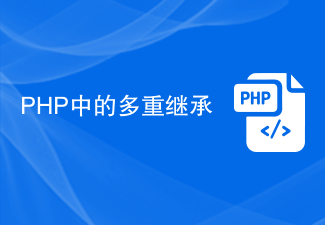 PHP中的多重继承Aug 23, 2023 pm 05:53 PM
PHP中的多重继承Aug 23, 2023 pm 05:53 PM继承:继承是面向对象编程(OOP)中的一个基本概念,它允许类从其他类继承属性和行为。它是一种基于现有类创建新类的机制,促进代码重用并建立类之间的层次关系。继承基于"父子"或"超类-子类"关系的概念。从中继承的类被称为超类或基类,而继承超类的类被称为子类或派生类。子类继承其超类的所有属性(变量)和方法(函数),还可以添加自己独特的属性和方法或覆盖继承的属性和方法继承的类型在面向对象编程(OOP)中,继承是一个基本概念,它允许类从其他类中继承属性和行为。它促进
 如何使用Java强制继承代理final类?Sep 06, 2023 pm 01:27 PM
如何使用Java强制继承代理final类?Sep 06, 2023 pm 01:27 PM如何使用Java强制继承代理final类?在Java中,final关键字用于修饰类、方法和变量,表示它们不可被继承、重写和修改。然而,在某些情况下,我们可能需要强制继承一个final类,以实现特定的需求。本文将讨论如何使用代理模式来实现这样的功能。代理模式是一种结构型设计模式,它允许我们创建一个中间对象(代理对象),该对象可以控制对另一个对象(被代理对象)的


Hot AI Tools

Undresser.AI Undress
AI-powered app for creating realistic nude photos

AI Clothes Remover
Online AI tool for removing clothes from photos.

Undress AI Tool
Undress images for free

Clothoff.io
AI clothes remover

AI Hentai Generator
Generate AI Hentai for free.

Hot Article

Hot Tools

SublimeText3 Chinese version
Chinese version, very easy to use

WebStorm Mac version
Useful JavaScript development tools

Zend Studio 13.0.1
Powerful PHP integrated development environment

SublimeText3 Linux new version
SublimeText3 Linux latest version

Safe Exam Browser
Safe Exam Browser is a secure browser environment for taking online exams securely. This software turns any computer into a secure workstation. It controls access to any utility and prevents students from using unauthorized resources.





